Votre panier est vide
Besoin d'inspiration ?
Rendez-vous dans le programme en ligne du GrandPalais
Article -
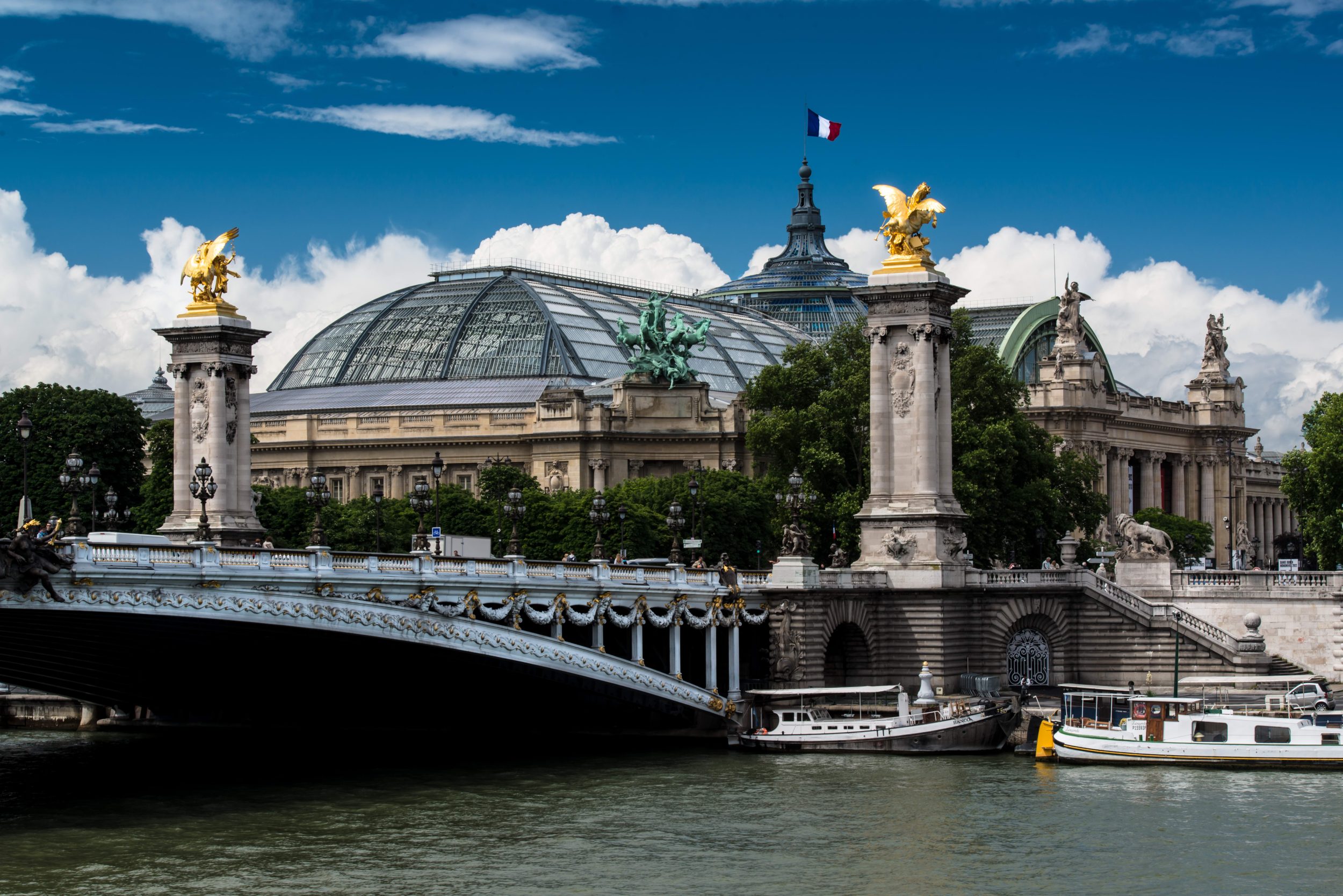
The Quattrocentro period from 1400 to 1499 in Italy is the equivalent of our 15th century.
An initial Renaissance took place in Florence, Italy in the 1420s. A group of young artists decided to break from the ideas of the past and create a new form of art. Florence was a very prosperous city in the early 15th century. It was ruled by a family of bankers, the Médicis. They were great patrons who supported the development of the arts.
The invention of perspective is often attributed to Brunelleschi. He is said to have painted the first pictures representing buildings in perspective. He was to have a big influence on Renaissance painters. After a trip to Rome where he studied the ancient monuments, he decided to devote himself to architecture. Breaking away from Gothic architecture, he looked for simple volumes and took inspiration from the forms of Antiquity: the dome, arch, etc. The city of Florence commissioned the dome of Santa Maria del Fiore cathedral from him. The size of the dome represents a considerable technical feat.
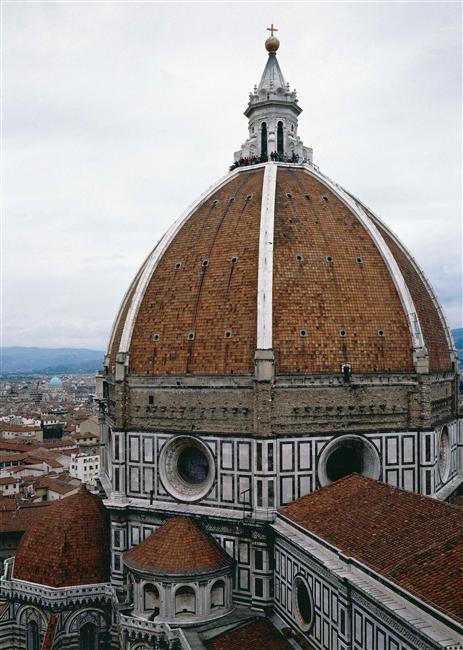
A young painter called Masaccio put Brunelleschi’s discoveries into practice. He painted clever perspectives which created a sense of spatial depth. His frescoes for churches give a real impression of trompe-l’œil (the illusion of three dimensions). He attached great importance to the psychology of the figures, breaking from the Middle Ages when there was little evidence of expression. On this fresco of the Brancacci chapel, you can feel the sadness of Adam and Eve driven out of Paradise. By painting feelings, Masaccio brought his characters closer to the faithful.
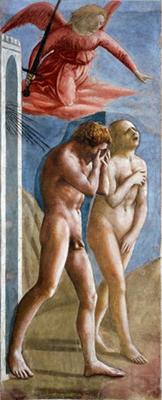
A friend of Brunelleschi, Donatello left for Rome with him to study the models of Antiquity. He too was concerned about the use of space and rendering expressions, only in sculpture. A protégé of the Médicis, he worked on the decoration for Florence cathedral. This St George is a work he did in his youth. The warrior’s attitude is natural and his gaze shows courage. He is going to confront the dragon. Donatello sculpted this battle in relief on the base of the statue.
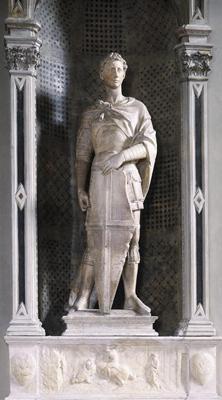
Votre panier est vide
Besoin d'inspiration ?
Rendez-vous dans le programme en ligne du GrandPalais
See content : In the fantastic world of Eva Jospin: 8 questions for the artist
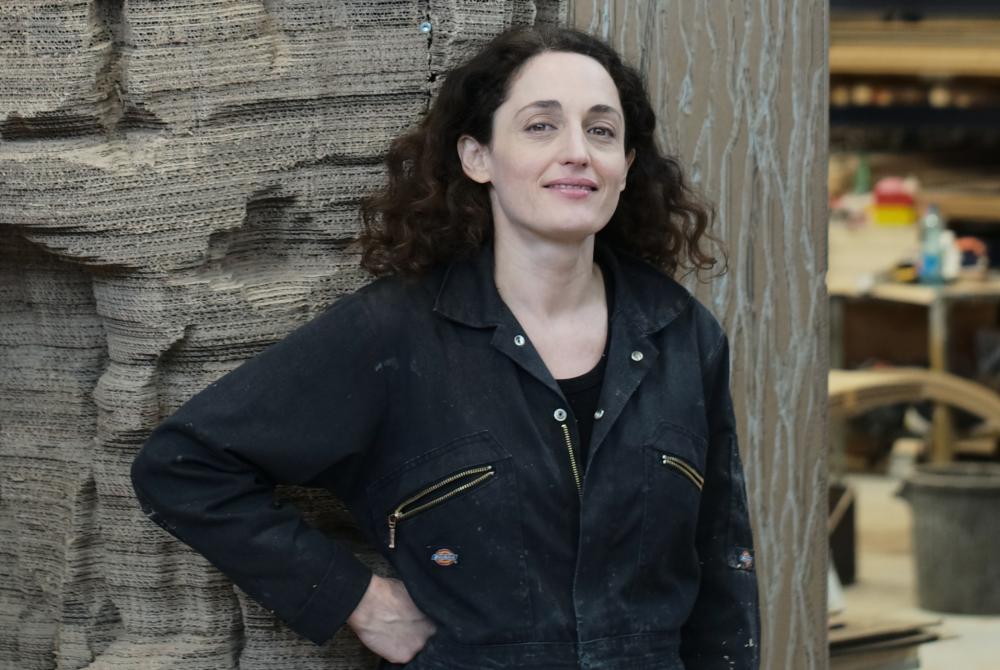
Article -
At the Grand Palais, Eva Jospin's "Grottesco" exhibition offers a timeless journey. Mysterious caves, sculpted nymphaea, petrified forests and "embroidered tableaux" come together to form a world apart. In this interview, the artist reveals her sources of inspiration, her relationship with cardboard and embroidery, and the way she turns each viewer into an explorer of her fantastical landscapes.
See content : It's open! Eva Jospin and Claire Tabouret: two new exhibitions at the Grand Palais
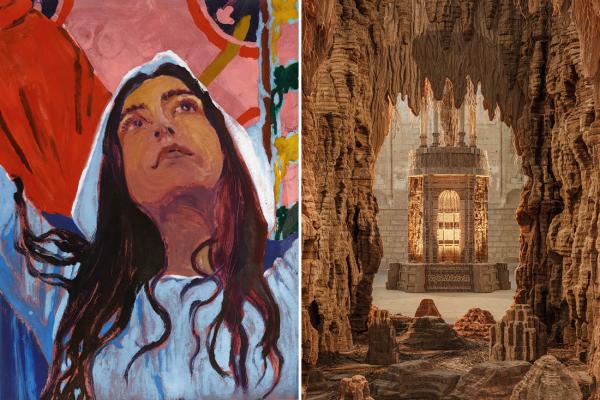
Article -
Until March 15, you're invited to explore the fascinating worlds of Eva Jospin and Claire Tabouret, presented in two Grand Palais galleries linked by the same entrance.
See content : A treasure of the Sun King soon to be displayed under the glass roof of the Grand Palais: book your tickets now!
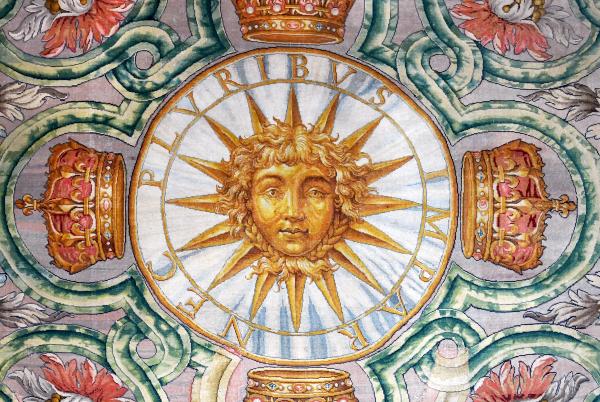
Manufacture de la Savonnerie d’après Charles Le Brun (1619-1690), Tête d’Apollon, détail du 6e tapis de la Grande Galerie du Louvre, laine et lin, 8,82 x 5,94. Paris, Mobilier national
Article -
Seven days only, some thirty carpets on display, a royal setting resurrected: enter the legend of the Sun King, under the majestic glass roof of the Grand Palais. Ticketing is now open!